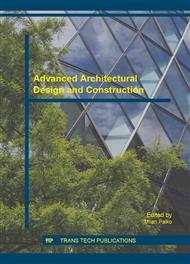p.313
p.320
p.326
p.332
p.338
p.345
p.351
p.359
p.365
Atmospheric Boundary Layer
Abstract:
Atmospheric Boundary Layer (ABL) is the lowest part of the troposphere. The main feature of the Atmospheric Boundary Layer is the turbulent nature of the flow. The thickness of the boundary layer, formed by flowing air friction on the earth’s surface under various conditions move in quite a wide range. ABL is generally defined as being 0.5 km above the surface, although it can extend up to 2 km depending on time and location. The flow properties are most important over the surface of solid objects, which carry out all the reactions between fluid and solid.
Info:
Periodical:
Pages:
338-344
Citation:
Online since:
January 2016
Authors:
Keywords:
Price:
Сopyright:
© 2016 Trans Tech Publications Ltd. All Rights Reserved
Share:
Citation:


